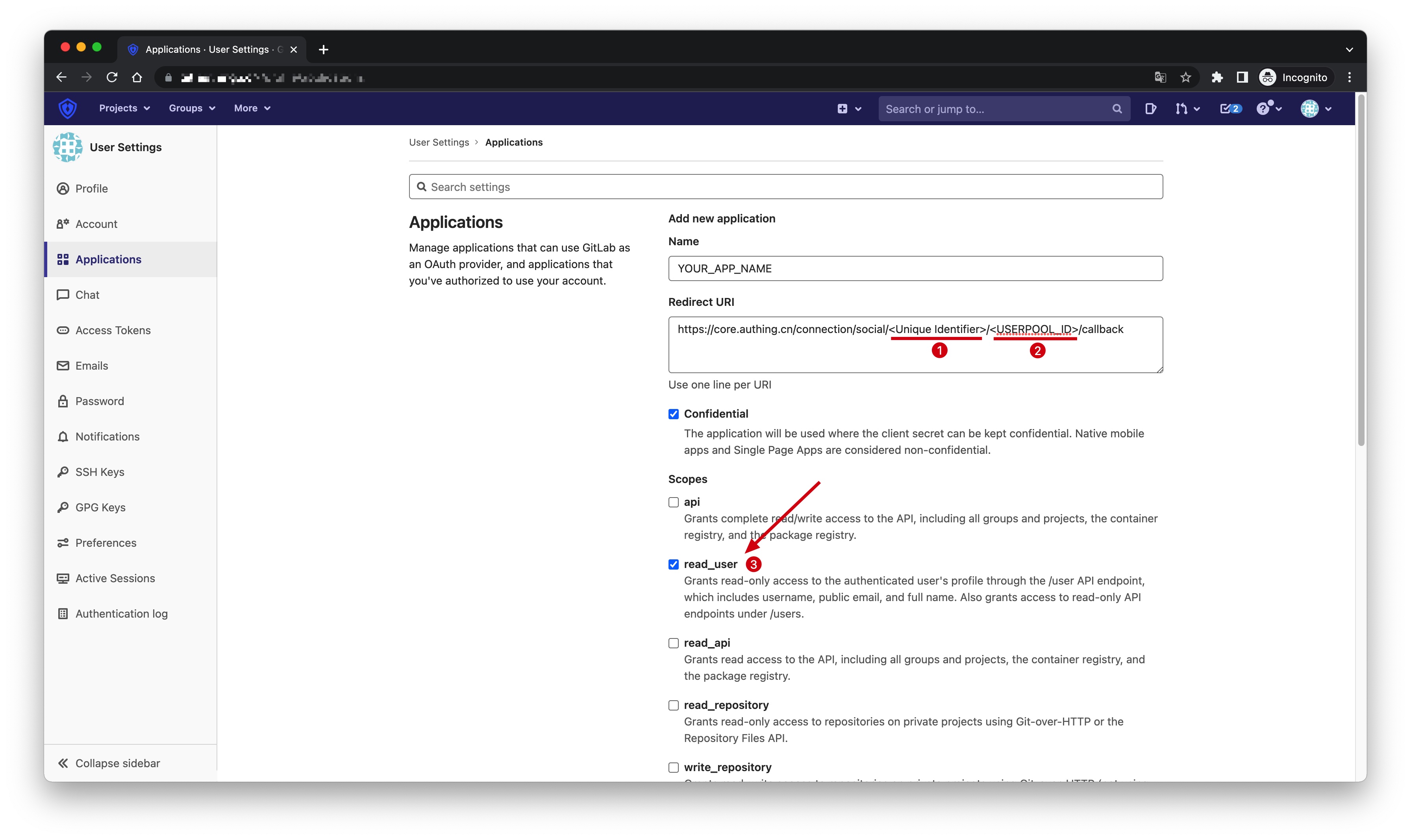¶ GitLab Social Login
¶ Introduction
- Overview: GitLab social login is a user who uses GitLab as the identity provider to securely log in to a third-party application or website. By configuring and enabling GitLab's social login in Authing, you can quickly obtain basic open information of GitLab through Authing and help users achieve password-free login.
- Application scenarios: PC website
- End-User Preview:

¶ Precautions
- If you don't have a GitLab account, please go to GitLab.com (opens new window) to register an account
- If you do not have an Authing Console account, please go to the Authing Console (opens new window) to register a developer account.
¶ Step 1: Create an application in GitLab (or your GitLab instance)
Go to the application management page of GitLab (or your GitLab instance) and click "New Application": 
On the Create Application page, configure the following information:
- Redirect URI: Fill in
https://core.authing.cn/connection/social/<Unique Identifier>/<USERPOOL_ID>/callback, you need to replace<Unique Identifier>with yourUnique Identifierand<USERPOOL_ID>with your UserPool ID - Scopes: Make sure
read_useris checked
Finally, click "Save Application". After the creation is complete, you need to record the Application ID and Secret, which will be used in the next step. 
¶ Step 2: Configure GitLab in the Authing Console
2.1 On the "Social" page of the Authing Console, click the "Create Connection" button to enter the "Choosing a Social Identity Source" page.

2.2 On the "Choosing a Social Identity Source" page, click the "GitLab" card. 
2.3 On the "GitLab" configuration page, fill in the relevant field information obtained in the step 1. 
| Field | Description |
|---|---|
| Unique Identifier | a. The unique identifier consists of lowercase letters, numbers, and -, and the length is less than 32 digits. b. This is the unique identifier of this connection and cannot be modified after setting. |
| Display Name | This name will be displayed on the button on the end user's login screen. |
| Base URL | By default GitLab.com is used as the authentication endpoint, but you can also specify any private GitLab instance such as https://gitlab.example.com/. |
| Application ID | The GitLab application ID obtained in the previous step. |
| Secret | The GitLab application key obtained in the previous step. |
| Login Mode | After enabling the "Login Only Mode", you can only log in to an existing account and cannot create a new account. Please choose carefully. |
| Account Identity Association | When "Account Identity Association" is not enabled, a new user is created by default when a user logs in through an identity provider. After enabling "Account Identity Association", you can allow users to directly log in to existing accounts through "Field Matching" or "Ask Binding Mode". |
2.4 After the configuration is complete, click the "Create" or "Save" button to complete the creation.
¶ Step 3:Development access
Recommended development access method: Use a hosted login page
Description of advantages and disadvantages: The operation and maintenance are simple, and Authing is responsible for the operation and maintenance. Each user pool has an independent second-level domain name; if you need to embed it into your application, you need to use the pop-up mode to log in, that is: after clicking the login button, a window will pop up, the content is the login page hosted by Authing, or the browser The server redirects to the login page hosted by Authing.
Detailed access method:
3.1 Create an application in the Authing Console. For details, see: How to create an application in Authing
3.2 On the created "GitLab" identity provider connection details page, open and associate an application created in the Authing Console

3.3 Click the "Experience Login" button of the app in the Authing Console, and experience the "GitLab" login in the pop-up login window





